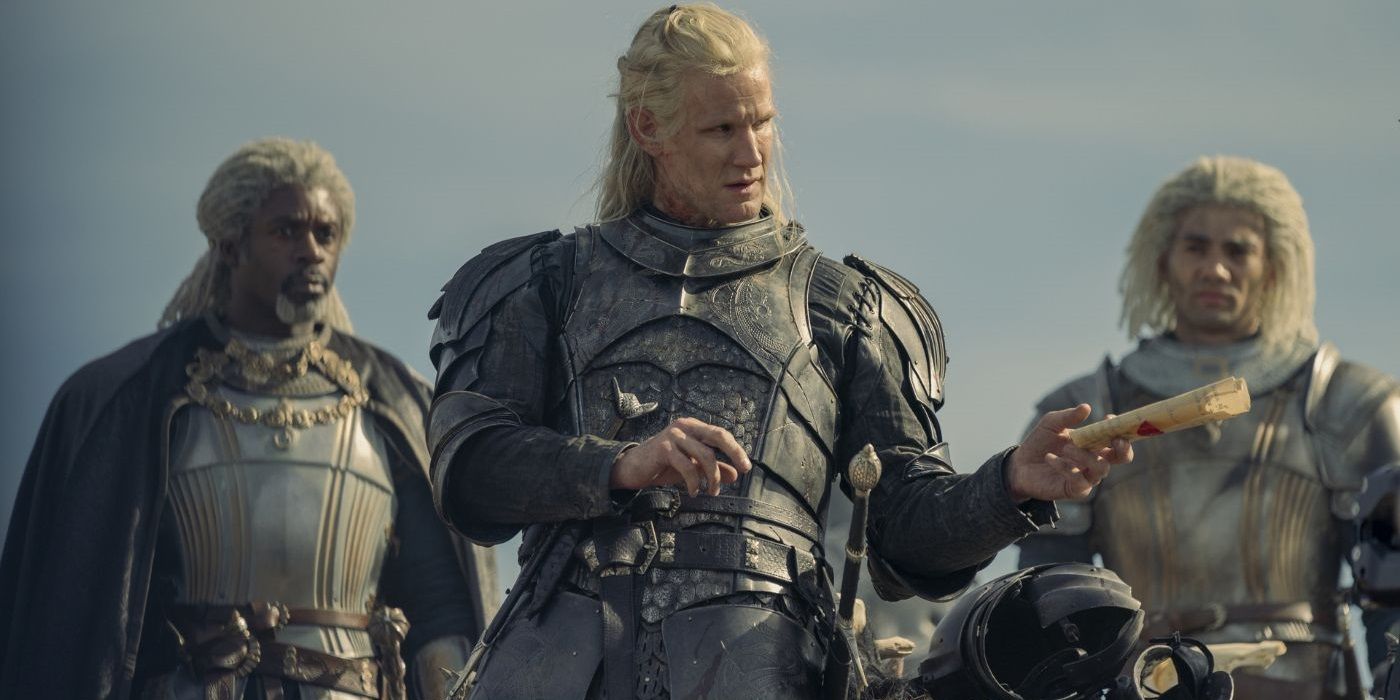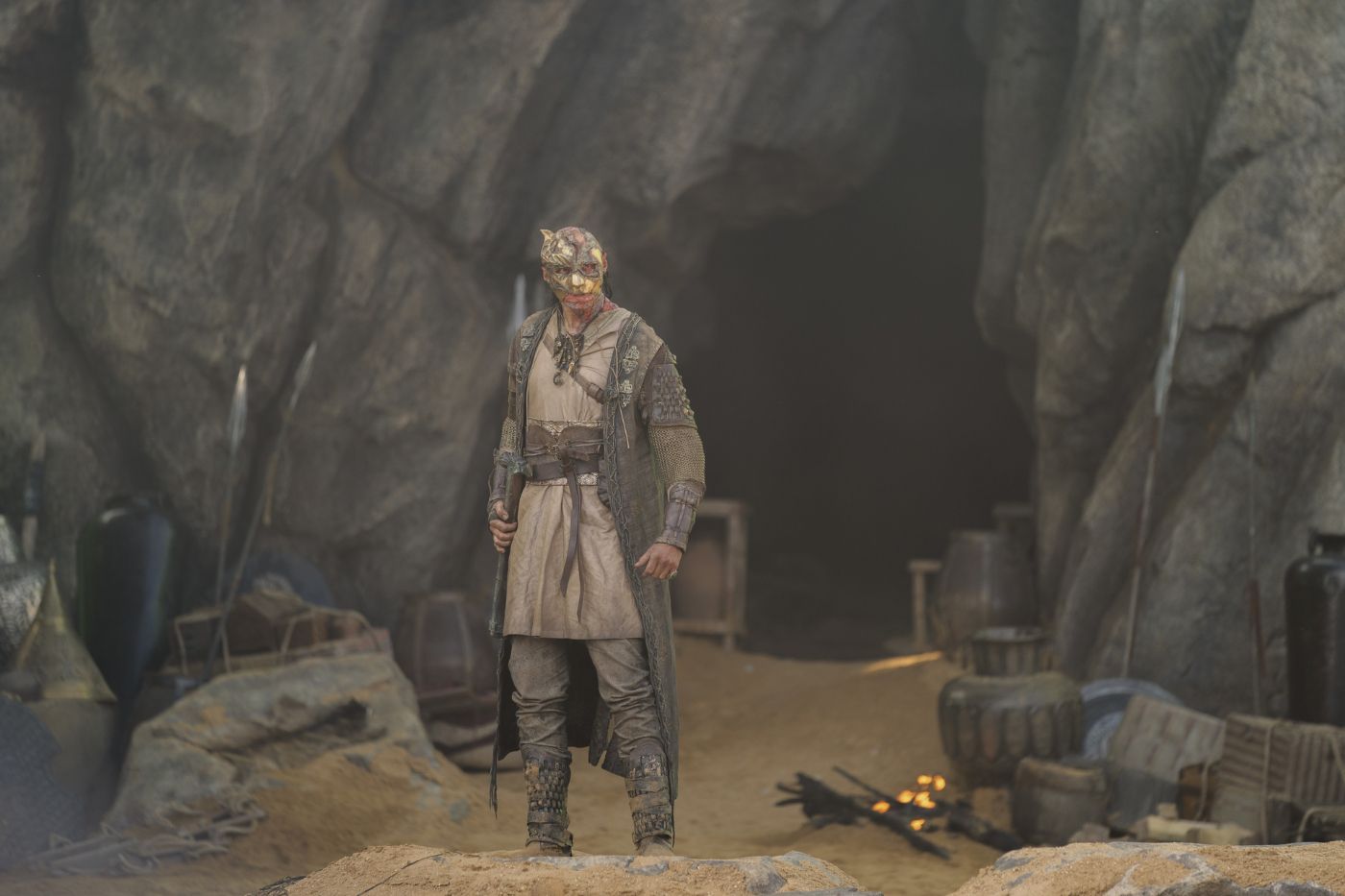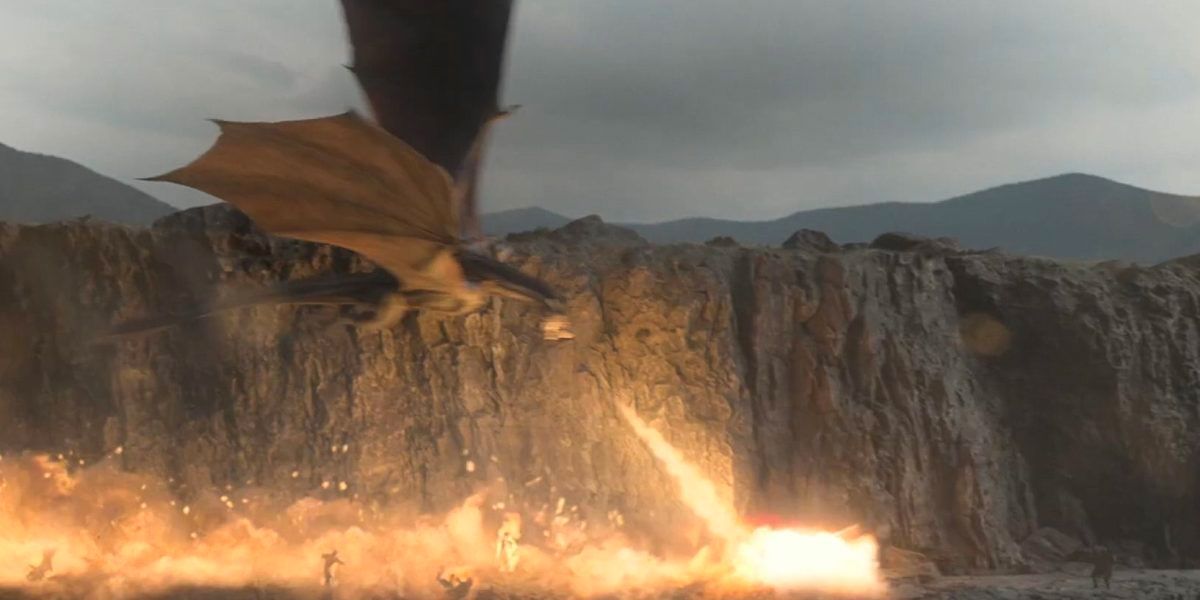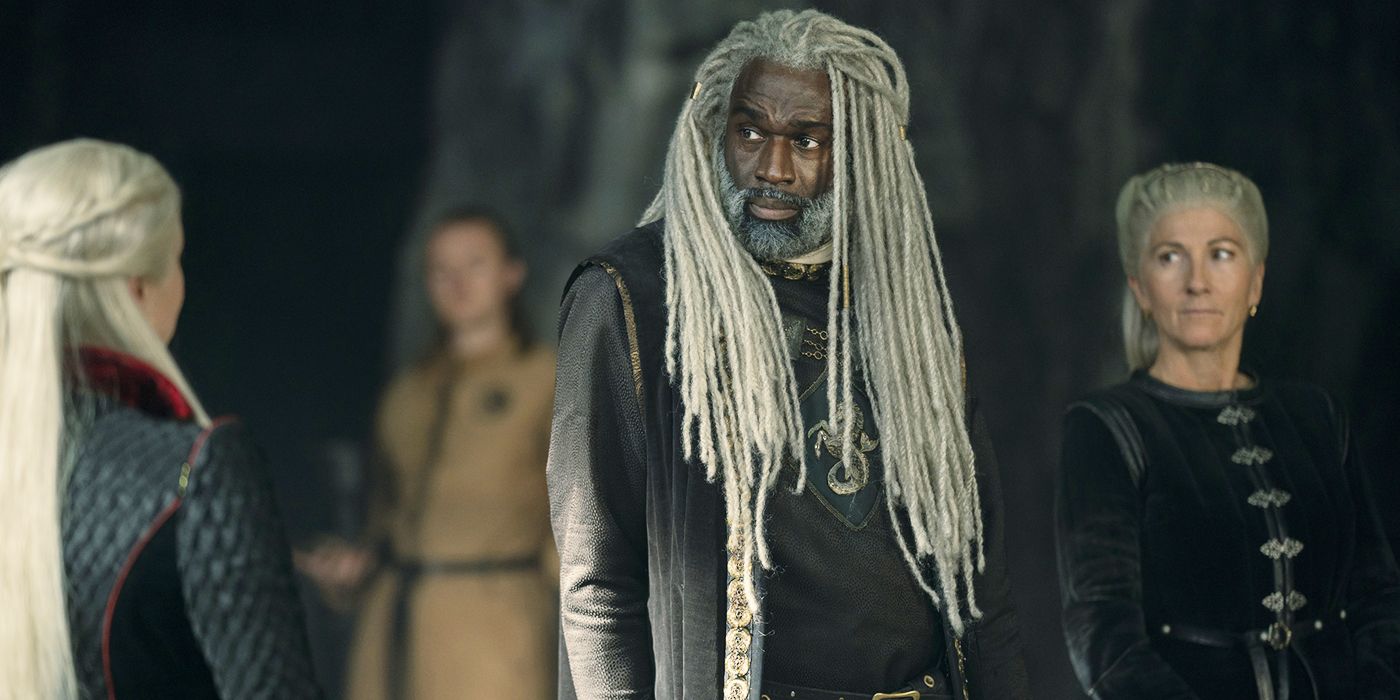Editor's Note: The following contains spoilers for Season 1 of House of the Dragon.Although the duel of dragons Arrax and Vhagar in the House of the Dragon finale was easily among the first season’s most action-packed moments, “The Black Queen” also felt like a return to the strategic nature of Game of Thrones. While both Game of Thrones and its sister series are among the most expensive television shows ever made, neither series delivered an empty spectacle. It was more important to show the strategy, political maneuvering, and ethical decisions that were made in war than just dedicating time to action sequences. In “The Black Queen,” Rhaenyra (Emma D’Arcy) and Daemon (Matt Smith) look to gather allies after Aegon Targaryen II (Tom Glynn-Carney) is named King of the Seven Kingdoms.
Although war is on the horizon in the next season of House of the Dragon, the series hasn’t given quite as well-rounded a view of Westeros. Returning to familiar locations like King’s Landing and Dragonstone is important to show the nature of House Targaryen, but some other areas of the Westeros map are barely mentioned, except when the plot requires it. This is the case with the villainous alliance of “The Triarchy,” who seem to be constantly popping up without ever proving themselves as a sustainable threat.
It’s interesting that House of the Dragon is almost exclusively dealing with the Targaryen characters. However, the threat of the Triarchy trivializes the rest of the show’s political consequences. This alliance of seemingly fearsome pirates was around during the reign of King Viserys (Paddy Considine), and seemingly reunites during each subsequent time jump. While perhaps this could have been used as a subtle commentary on the Targaryens’ ignorance when it comes to foreign affairs, the Triarchy is given so little screen time that it’s hard to treat them with any credibility. Giving a more well-rounded view of the entire landscape of the map will be an important lesson that House of the Dragon needs to heed as it continues.
The Triarchy Serves Its Purpose, Initially
The Triarchy consists of the Free Cities of Myr, Lys and Tyrosh in the Valyrian Freehold. At the very beginning of the series, King Viserys’ leadership is called into question because of his refusal to deal with the rise of the pirates in Lord Corlys Velaryon’s (Steve Toussaint) homeland. This is what leads to the show’s first major political move; Corlys decides to back Daemon for the Iron Throne because the younger Targaryen brother insists that he will help quash the pirate threat. It’s smart writing; the Triarchy’s rise shatters one of the show’s pivotal relationships and introduces another.
Initially, the Triarchy serves its purpose when Daemon, Corlys, and their combined forces wage war against them during the Siege of Bloodstone in “Second of His Name.” It’s an electrifying action sequence that does a great job at showing what type of antagonists the Triarchy actually area; these are ruthless warriors, but they don’t have any lofty ambitions outside reaping bloodshed. If Daemon’s last duel with the Triarchy’s leader, Craghas Dragar (Daniel Scott-Smith) had been the last time that this alliance was brought up, it would have shown Daemon’s combat abilities without leaving any lasting consequences for the Dance of Dragons.
A Reunited Triarchy Trivializes Victory
However, House of the Dragon trivializes this previous sequence when the Triarchy somehow reunites in the six years since Daemon’s exile. More than anything, bringing back the Triarchy seemingly has no purpose other than to draw Lord Corlys away from King’s Landing during the controversy over succession. Once again, the Triarchy’s name is used in passing for the sake of political agreements; Prince Reggio Haratis (Dean Nolan) of Pentos offers Daemon and his family lands and wealth so that they can stay with their dragons in order to defend Pentos from the re-energized Triarchy . It doesn’t help that we don’t return to what’s going on in the Stepstones after the time jump. It’s hard to feel like there is any immediate danger when none of the characters we’ve invested in are risking their lives there on screen.
The “Crabfeeder” himself also represents a missed opportunity. Since House of the Dragon has so many complex characters that blur the lines of morality, having one antagonist that’s just purely evil actually feels like a nice change of pace. The show does a great job at heightening the tension around the Crabfeeder after the excellent tease at the end of “The Rogue Prince;” even if the Crabfeeder was destined to be replaced by another pirate lord, it seemed like the show spent an awful lot of time developing a character that doesn’t pay off.
The Triarchy Disappears Again
“The Black Queen” short changes the Triarchy yet again. When Lord Corlys returns to Dragonstone to offer his loyalty to Rhaneyra and Daemon, he mentions in passing that he now controls the Narrow Seas after defeating the Triarchy during his absence from King’s Landing. Controlling the Narrow Seas will be an important advantage for Rhaenyra going forward, but the series doesn’t indicate what a hard fought territory it was to win. Controlling the Narrow Seas would allow Rhaenyra to cut off trade to King’s Landing; however, it never seems like the Triarchy got close to doing that during the decades that they’d been waging war in the Stepstones.
Perhaps the Triarchy was just a necessary bit of table setting that needed to be dealt with in the first season, but House of the Dragon has the opportunity to correct some of the errors that were made in the last two seasons of Game of Thrones. The show seemed to abandon the strategies that had been so delicately crafted in the first few seasons in favor of action-packed spectacle. Making Westeros feel like a real, lived-in universe with consequences will be of critical importance as we see the “Dance of Dragons” of legend.




